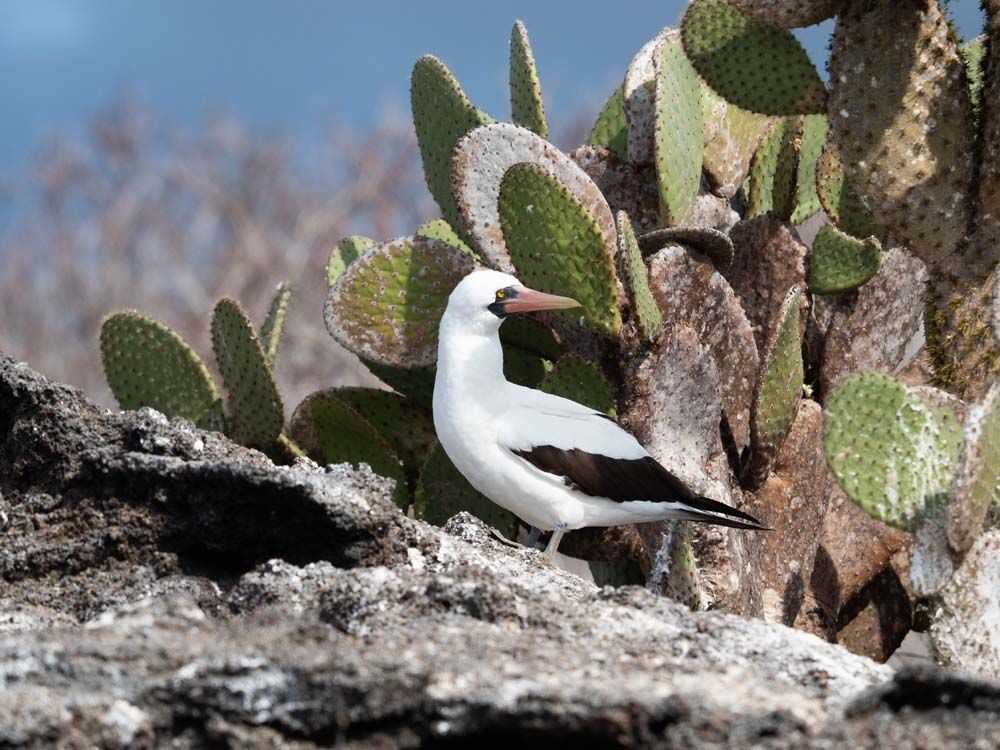This island is an old volcano made of basaltic rocks. It is relatively flat and rocky. This is the peak of the dry season in the Galapagos and soon the rains will arrive, bringing life to the dry palo santo forest. At this time of the year, red-footed boobies and frigatebirds nest in the trees all around us! This island is a paradise for birds.
Swallow-tailed gulls, Nazca boobies, tropical birds and storm petrels nest on the ground, forming colonies on the bare lava, under the dry forest or on cliff ledges. Early morning and late afternoon are great times to appreciate the best of Genovesa; we watched different seabirds going into the ocean and coming back to feed their young in the colony.
This morning, we explored Genovesa’s cliffs by Zodiac or by snorkeling. Flocks of red-billed tropicbirds flew in circles to court and look for nesting sites. Hundreds of frigatebirds flew around, too, on the lookout for a morning meal along the shore. Layers of lava rock make up the vertical cliffs of the crater, which is home to swallow-tailed gulls and many other types of seabirds. Some birds nest here on the cliffs and others seek shelter after long sea voyages.
In the afternoon, some of us took a Zodiac ride along the dramatic cliffs of Genovesa before landing at Prince Philip’s Steps. Other guests explored Genovesa’s beach. This was our last exploration walk on this island, and the weather conditions were the best! We enjoyed plenty of sunshine and an amazing exploration walk on Genovesa.







